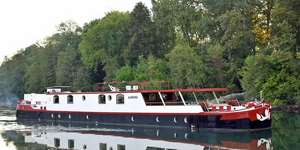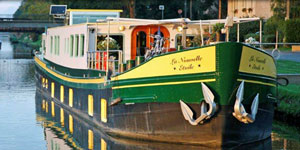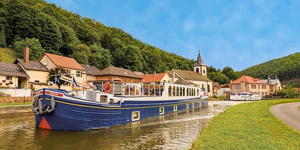Barging in Holland
The Netherlands - Barging in Holland - Dutch Barge Cruises
A barge cruise along the Dutch canals is a great way to explore the area and get off of the beaten track. Famous for windmills, tulips, pottery, and cheese, the Netherlands also boasts a vibrant artistic and cultural heritage. The stunning scenery welcomes visitors, with thriving cities including Haarlem and Delft to tell you more about the rich history of the area.
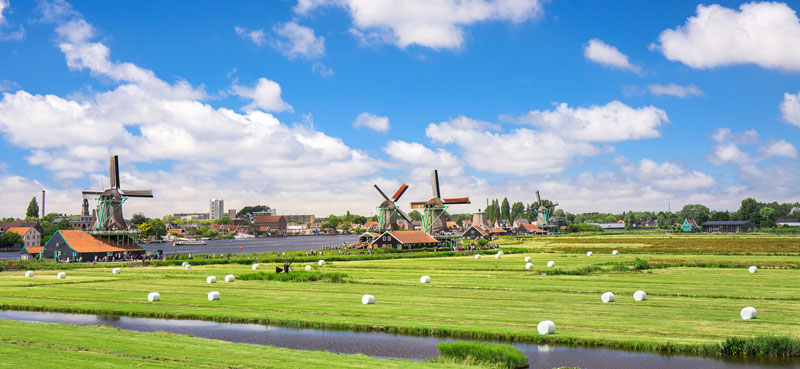
Is it Holland or The Netherlands ???
The Netherlands is often called Holland, because of the role the two western provinces, North and South Holland, played in its history. Holland encompasses Amsterdam, Rotterdam, The Hague, and other well-known Dutch cities such as Delft, Leiden, and Haarlem. Officially, however, it is the Kingdom of the Netherlands (Koninkrijk der Nederlanden). A sovereign state made up of the Netherlands in Europe and three Caribbean countries: Aruba, Curaçao, and Sint Maarten. The Kingdom also includes three Caribbean municipalities: Bonaire, Sint Eustatius, and Saba.
AALSMEER | GOUDA | DELFT | LEIDEN | AMSTERDAM | HAARLEM | ROTTERDAM | KEUKENHOF GARDENS | QUEEN'S / KING'S DAY
Aalsmeer
Aalsmeer is a small town and municipality in the Dutch province North Holland and has a population of nearly 31,000 inhabitants. It is a part of the broader urban area around Amsterdam.
In the Middle Ages, Aalsmeer owed its importance to fishing, livestock, the peat trade and, from about the year 1450, horticulture. Horticulture became increasingly important as the nearby town of Amsterdam grew in size and population. This development was promoted by the draining of the Haarlemmermeer in the 17th century. As a consequence, fishing in the area declined, and the local inhabitants turned to growing strawberries instead of fishing. Around the 1880's it was discovered that the area was very well suited to growing flowers and horticulture. Strawberry cultivation declined and flower cultivation and horticulture started to emerge with the cultivation of lilac, but later switched to potted plants and cut flowers.
There are now well over 600 flower nurseries in Aalsmeer, with greenhouses covering an area of some 1,500 acres (600 hectares). Aalsmeer is predominantly known for its flowers and flower auctions. It is home to the world's largest floral auction (VBA - Bloemenveiling Aalsmeer).
- The Historical Gardens (Historische Tuin)
In 1978, the Historical Garden (Historische Tuin) was established with the help of the local council and initiated by horticulturally-minded people from Aalsmeer. This living museum shows the development of horticulture in Aalsmeer from the 17th to the mid-20th century. Its many exhibits include the development of Aalsmeer from a swamp to a town, gardening tools, traditional farm life, 55 varieties of Dahlias, over 150 types of roses, and also a tree with 12 kinds of pears.
- Aalsmeer Flower Auction
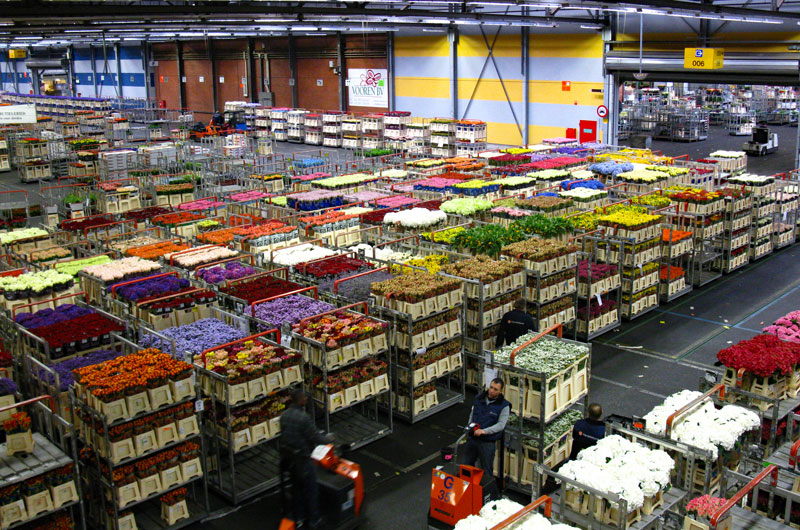
Just outside the town of Aalsmeer is the huge auction complex, Bloemenveiling Aalsmeer.The building where the trades take place is one of the largest in the world at 10.6 million square feet. The auction was established in 1928. Royal FloraHolland is a cooperative company that was formed in 2008 when FloraHolland and Bloemenveiling Aalsmeer merged. On a typical weekday, an astounding 43 million flowers and 5 million plants change hands. A hefty 60% of the worldwide trade in flowers and plants flows through the Dutch auctions.
- Westeinder Lakes (Westeinderplassen)
One-third of the municipality of Aalsmeer is taken up by the Westeinder lakes. In the Middle Ages, the peat from this area was excavated, which was an important and valuable fuel at that time. These excavations created ponds that slowly filled with water. The area has developed further over the years. Today, it's a vast lake area of no less than ten square kilometers with islands, reed lands, and open water. These lakes are ideal for rowing, surfing, sailing and swimming. Boats are available for hire and those with a license can drive a motorboat or go water skiing. There is a recreation park for day-trippers at Vrouwentroost, which boasts a grassy field, picnic places and surfing facilities. The Oosteinder lakes are a protected nature reserve with a wide diversity of flora and nesting sites for birds.
Gouda
World famous for its cheese, Gouda (pop. 72,000) also boasts one of the nicest town halls in the Netherlands, as well as some of the best stained glass windows in all Europe.
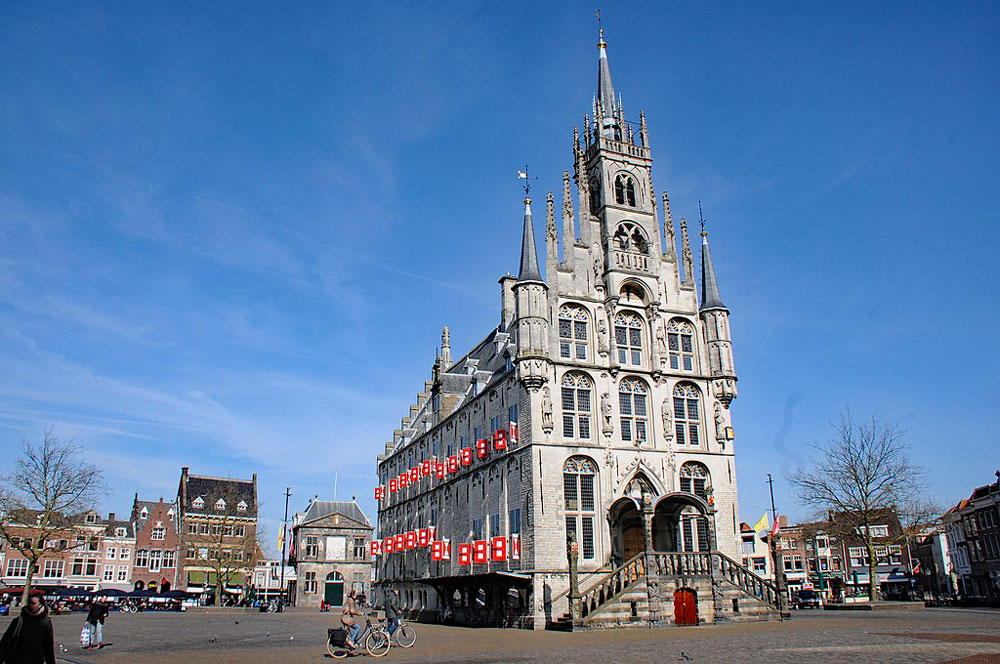
The Market Square (Markt) is the heart of the city's activity. The market is still held several days a week, and the main shopping street passes through here. The Square is dominated by the splendid Gothic town hall (stadhuis), built between 1448 and 1450. Just behind the town hall, is the Scale House (Waag), dating from 1667, which was formerly used for weighing goods (especially cheese) to levy taxes. It now houses a museum retracing the history of cheese trade.
South of Market Square is the 16th-century Great St. John's Church (Grote Sint Janskerk), the largest cross-shaped church in the Netherlands. This church is famous for its stained glass windows, created between 1530 and 1603, an which are considered to be among the finest in the world. The works were sponsored by rich noble families as testified by the coat of arms at the bottom of each window.
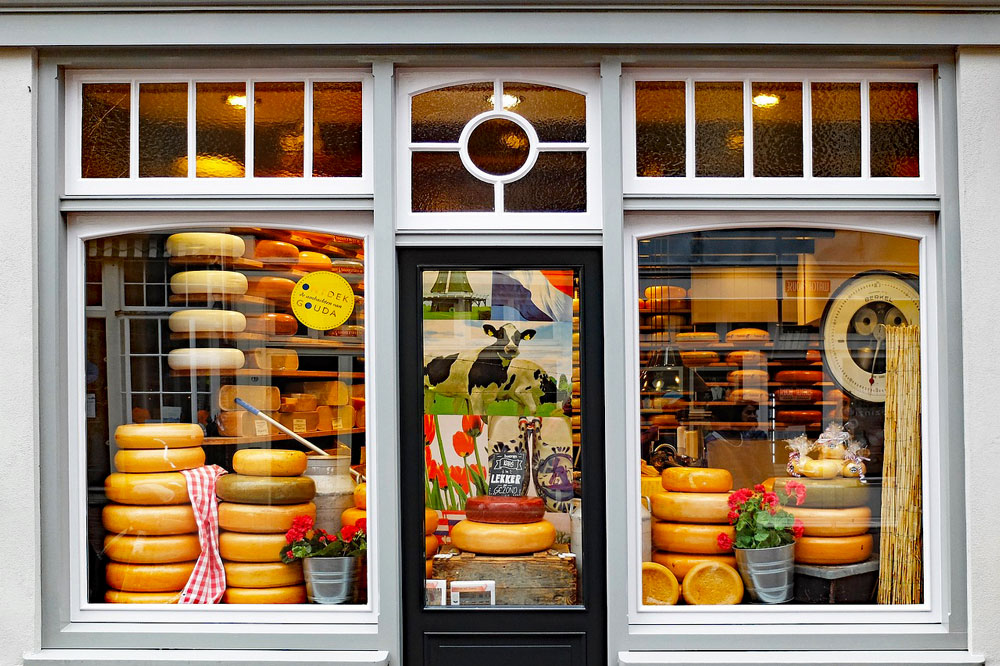
Other attractions in town include the Waaiersluis (historic lock on the Hollandse IJssel), the Harbour Museum Gouda (Museumhaven Gouda), the Gouda Museum (local history), De Verborgen Tijd Museum (modern art), the De Moriaan Museum (national pharmaceutical museum), and the Verzets Museum (about Dutch resistance during WWII).
Delft
Delft, a picturesque community made famous by the Dutch painter Vermeer, is located north of Rotterdam and east of the Hague.
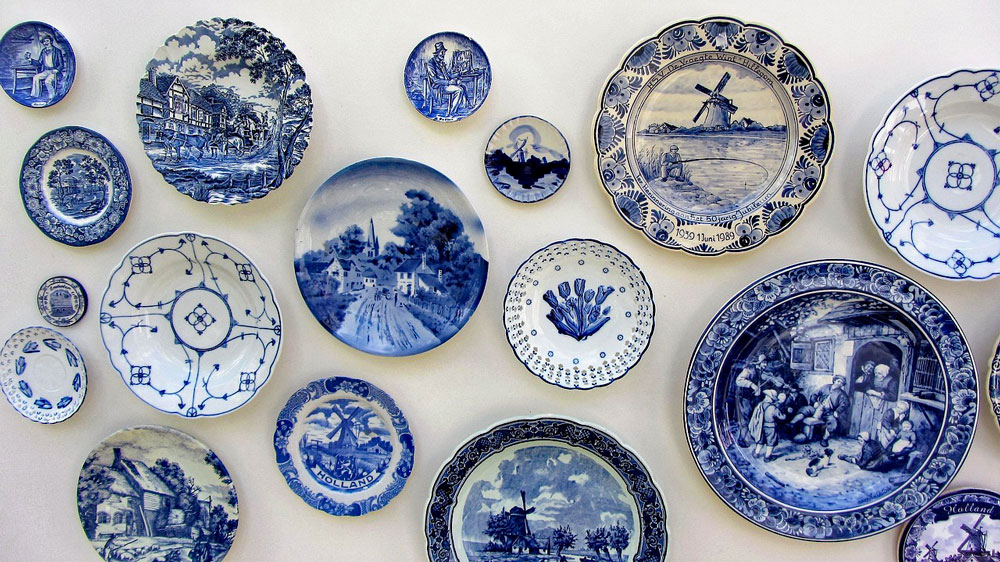
The town of Delft was once the world center for the production of Royal Delft Pottery. In the mid-18th century, approximately 32 factories produced pottery in Delft. Today, there is only the Royal Dutch Delftware Porcelain Factory (Koninklijke Porceleyne Fles).
The pedestrian-friendly community is a great place to explore by foot. There are a number of excellent museums and galleries in Delft, as well as shopping.
Here are a few places you might find of interest:
- The Army Museum (Legermuseum) focuses on Dutch military history, uniforms and artifacts.
- Lambert Van Meerten Museum: The private art collection of Lambert van Meerten is open for viewing at the former home of Huis Lambert van Meerten.
- The Nusantara Museum focuses on the history and cultures of Indonesia. It examines the 400-year old historical relationship between the Netherlands and Indonesia.
- The Prinsenhof Museum (Museum Het Prinsenhof) contains art related to the 80 year war with Spain. Once a monastery, the Prinsenhof today also features an assortment of art from the 17th century.
- The Paul Tetar van Elven Museum in the town center, features a large collection of paintings, ceramics and porcelains.
- The Vermeer Centre (Vermeer Centrum) examines the life and work of Johannes Vermeer, the world-famous 17th century Dutch painter from the Dutch Golden Age.
Leiden
Leiden, the birthplace of Rembrandt, is home to more than 35 pretty courtyard gardens, hundreds of monuments, the oldest university in the Netherlands (founded in 1575), 13 museums, 28 kilometers of canals, and a bustling city center. With its long history of culture and learning, its motto is the City of Discoveries.
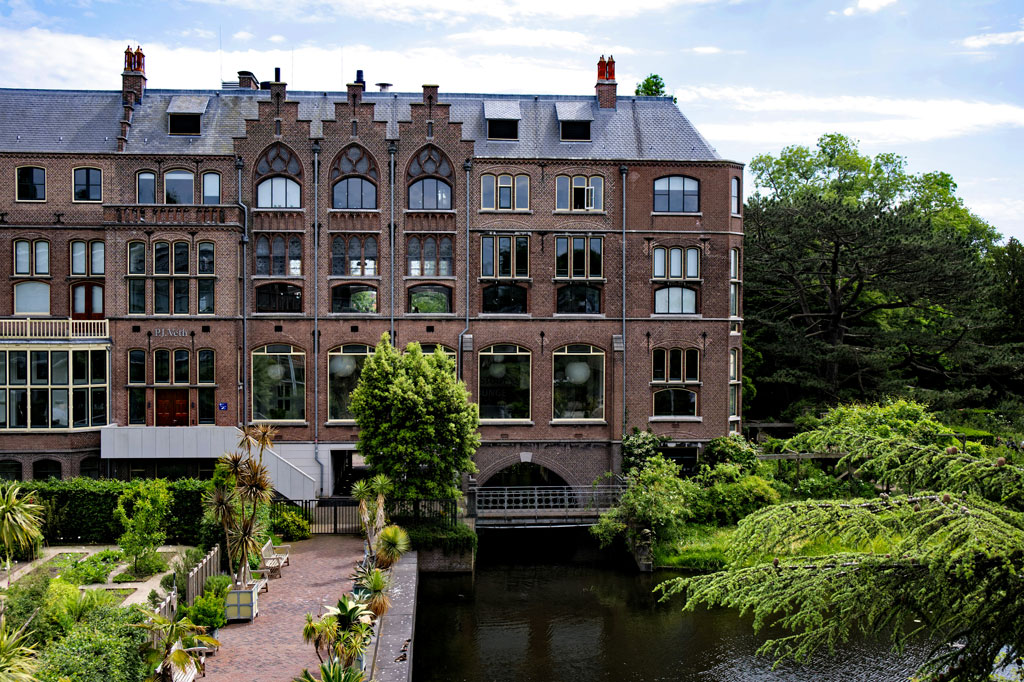
At the Young Rembrandt Studio, in a 17th-century house in Leiden, see where Rembrandt spent his younger years (1606 to 1630) learning how to draw, paint and make etchings at the hand of his mentor, Jacob van Swanenburgh. Every year around July 15th, Rembrandt's birthday, Leiden is transformed into a magical 17th-century city during the "Leidse Rembrandt Dagen".
With no fewer than 13 excellent museums, all within walking distance of each other and brimming with a wide range of fascinating exhibitions, there is plenty to discover in the world of art and culture. Including: the Naturalis Biodiversity Center that was named European Museum of the Year 2021; The Dutch National Museum of Antiquities which houses archaeological treasures and offers insight into ancient civilizations; at CORPUS you will be introduced to the wonders of the human body; the Museum De Lakenhal is the true municipal museum of Leiden and highlights the history of this city with beautiful artworks.
Leiden has always played an important role in medical science and continues to do so. A fine example is the Leiden Bio Science Park, where new discoveries are being made. But it all began several hundred years ago with the founding of the oldest university in the Netherlands, the medicinal gardens of the Hortus botanicus, and the arrival of Professor Boerhaave. The Hortus botanicus, the oldest botanical garden in the Netherlands, is the green plant treasury of Leiden University. For more than four centuries, plants from all over the world have been collected and cultivated, admired and studied in the beautiful garden and greenhouses. Rijksmuseum Boerhaave is a museum of the history of science and medicine. The museum hosts a collection of historical scientific instruments from all disciplines, but mainly from medicine, physics, and astronomy.
Amsterdam
There are almost as many bikes as people living in Amsterdam, if not more!
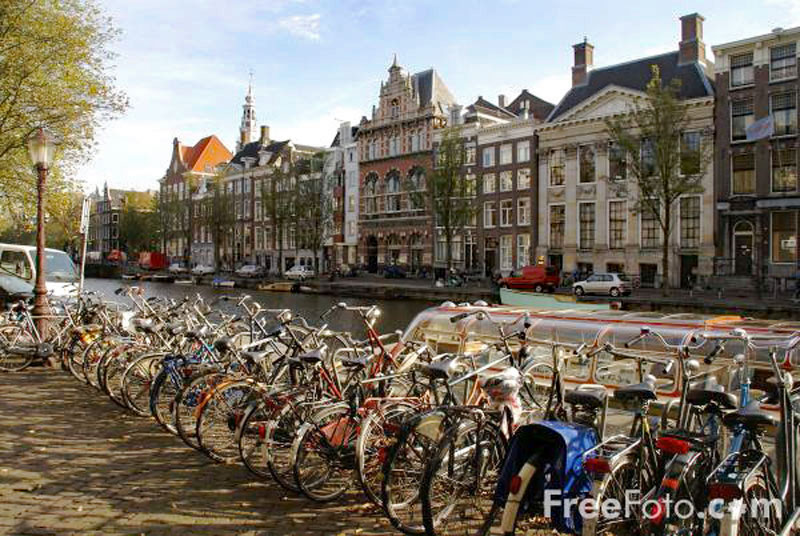
Founded in the late 12th century, Amsterdam's name originates from a dam on the Amstel River. The city's nickname, Mokum, is derived from the Hebrew word "Makom", which means "place". The city is also often called "Venice of the North", due to the many canals.
From its humble beginnings as a 13th century fishing village on a river bed to it's current role as a major hub for business, tourism and culture, Amsterdam has had a strong tradition as a centre of culture and commerce.
- Museums
Museums in Amsterdam are among the main tourist attractions. The Rijksmuseum, Van Gogh Museum and Stedelijk Museum are the most popular choices, but there are many, many more. Amsterdam has over fifty museums, which attract millions of visitors every year. Alongside the wealth of magestic Golden Age paintings, you'll find exciting modern art, press, film, theatre and photography museums and some unique Dutch treats as well. NEMO is a hands-on, science and technology museum housed in an unmissable, boat-shaped building, is interesting for both adults and children. The Shipping Museum is also worth a visit with its replica of a Dutch trading ship, docked at the front. Museums such as the Tropical museum and Jewish museum also include children's section. The Anne Frank house is the hiding place where Anne Frank wrote her famous diary during World War II, and the original of the diary is on display. The Museum of Bags and Purses is a private museum of ladies handbags with over 3000 in their collection. The Diamond Museum is a small and elegant museum organized by Coster Diamonds. The Cat Cabinet (De Kattenkabinet) is a small private art museum, established by its founder William Meijer to memorize his cat.
- Other sites to see & places to visit
Established in 1632, the Hortus Botanicus in Amsterdam is one of the world's oldest botanical gardens - a small oasis of calm and grace in the heart of the hectic city. Behind the 300-year old gates at the entrance, situated between the city center and the Plantage district, are some 6,000 different species of plants that originate from every part of the world.
The Dam Square is the very center of Amsterdam and was once its central marketplace. It was created in the 13th century when a dam was built around the river Amstel to prevent the Zuiderzee sea from swarming the city. There are food stalls, restaurants and shops galores, and the Amsterdam Diamond center. Whatever the weather, there is always something going on. Some the the attractions at Dam Square are the Royal Palace (Koninklijk Palace), the Hotel Krasnapolsky, the National Memorial statue which was erected in 1956 in memory of Dutch soldiers and members of the resistance who died in World War II, the world famous Madame Tussauds wax works museum, and the New Church (Nieuwe Kerk).
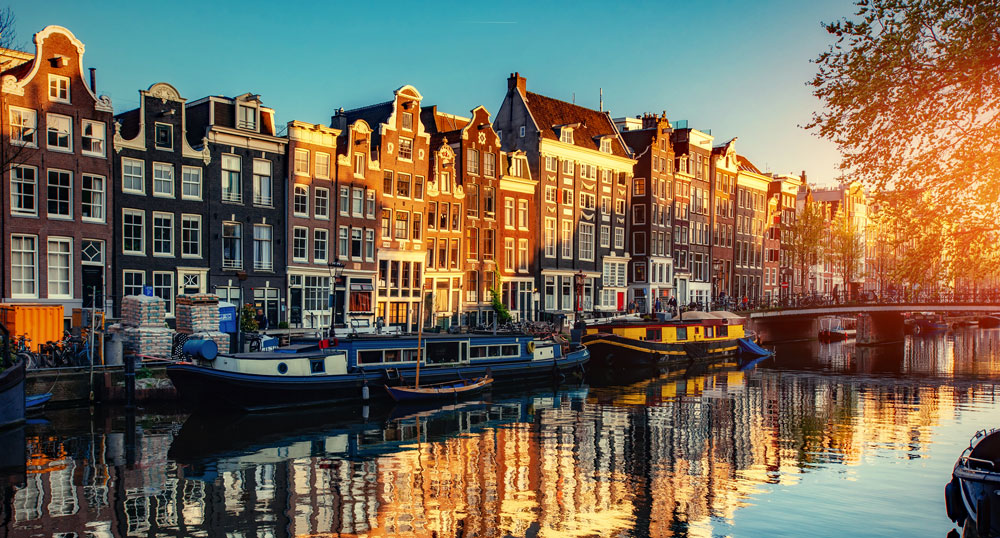
Amsterdam's canals, the number of which have led Amsterdam to become known as "The Venice of the North". The four main city center canals are Prinsengracht, Herengracht, Keizersgracht and Singel. There are also numerous smaller canals in the neighborhood of Jordaan, of which the Brouwersgracht, the Bloemgracht and the Leliegracht are especially pleasant.
The Red Light District is a very famous area of Amsterdam. As anywhere, be careful when walking through the quieter areas of the district. And, of course, there is a strict "no photography" policy.
Artis ZOO - Right in the center of Amsterdam, you can also find the oldest Zoo of Holland. It consists of four main areas: Zoo, Planetarium, Botanical Gardens and Geological and Zoological museum.
Amsterdam Parks - Amsterdam has a number of beautiful, quiet parks where you can relax during the busy day in town. The largest, Vondelpark, is located in the very center of the city. Other parks as Beatrixpark, Frankendael, Sarphatipark, Amstelpark, Westerpark are quiet, well-maintained community parks. An artificial forest just South of Amsterdam, Amsterdamse Bos, is a big nature reserve with many attractions.
Windmills - There are 8 stunning windmills in at the heart of the city just waiting for your camera.
Haarlem
Haarlem, capital of the province of North Holland, is located on the river Spaarne, about 20 km west of Amsterdam and near the coastal dunes. It has been the historical center of the tulip bulb-growing district for centuries and bears the nickname "Bloemenstad" (flower city), for this reason.
Rotterdam
The Maas River flows right through the city, crossed by the now-famous Erasmus Bridge which has become the symbol of Rotterdam. Countless tiny harbors line the banks of the river, each with its own unique character. Further downstream lies the industrial port that has made Rotterdam the biggest port city in Europe. Central Rotterdam was almost completely destroyed by German air attacks in 1940. The energetic rebuilding of the city after the war, re-planned with modern shopping streets and residential districts and with numerous high-rise blocks, has made Rotterdam one of the most modern cities in Europe.
Keukenhof Gardens
Set in 77 acres of wooden park, the Keukenhof Gardens has been one of the most popular destinations in the Netherlands for many years. Located near Lisse, southwest of Amsterdam, Keukenhof is the world's largest flower garden with approximately seven million flower bulbs planted annually. Discover an unprecedented wealth of spectacular floral displays planted in endless varieties, alternated with beautiful works of art.
Established in 1949 by the mayor of Lisse, the idea was to present a flower exhibit where growers from all over the Netherlands and Europe could diisplay their hybrids and, in turn, help promote the Netherlands' export industry.
Keukenhof's season runs from late March through late May. Daffodils, crocus, and narcissi are on display when the gardens open in March, with tulips making their appearance a few weeks later. Hyacinths appear around mid-April and stay in bloom for several weeks. If you time your visit for the last half of April, you're likely to catch some of everything blooming at once.
Queen's Day - April 30th (King's Day - April 27th)
UPDATE: When Willem-Alexander became King in 2013, the holiday was renamed "King's Day" and the date shifted to April 27th, his birthday.
The following information is from the retired hotel barge Savoir Faire:
If you only visit Amsterdam once in your life, make sure your visit coincides with April 30th. Queen's Day is the annual Dutch national holiday in honour of the late Queen Juliana's birthday.
On Queen's Day, there are celebrations throughout the Netherlands. However, the most popular destination is Amsterdam where up to one million visitors join the 750,000 locals in the world's largest street party.
Queen Beatrix, who succeeded her mother in 1980, decided to keep the holiday on April 30 as the weather on her own birthday, January 31, tends to prohibit outdoor festivities.
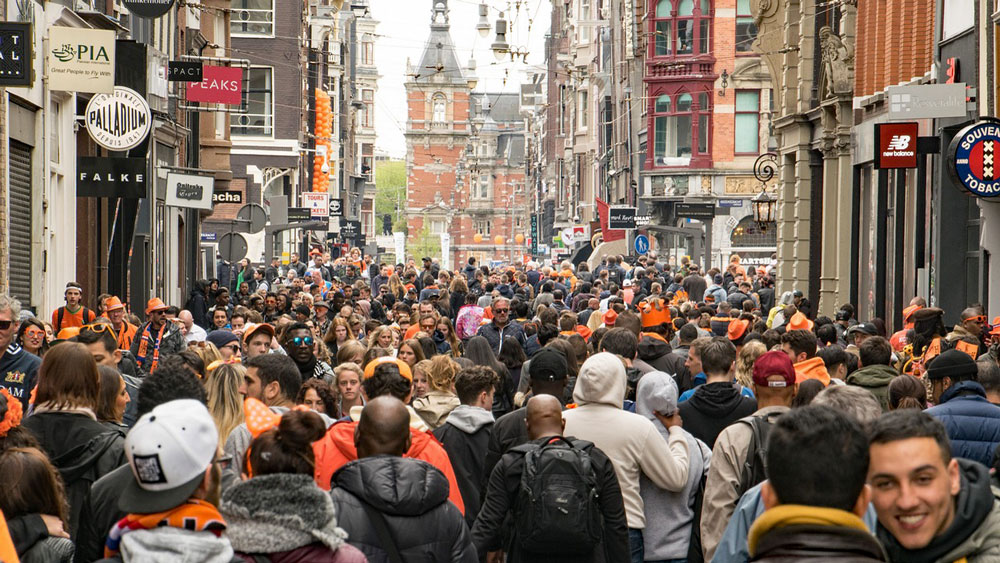
- The Night Before Queen's Day
Queen's Day festivities start around midnight and last throughout the night (though official rules state that pubs must close for an hour or so before sunrise). Simply walk around in downtown Amsterdam (the Jordaan and Nieuwmarkt areas being among the most popular spots) and you'll find plenty of partying going on.
That said, our advice is that you pace yourself. You'll want to be more or less sober for the main feast.
- Queen's Day Proper
6:00am marks the start of the "free market" – a street market where half the population sells their bric-a-brac, used clothes, and crafts for next to nothing. Where? Everywhere people live. What? Well, you'll find anything from broken toys, last year's Queen's Day purchases, and fantastic bargains on musical instruments, electonics, software and everything else under the sun.
Throughout the city, professional street performers vie for attention. There are pick-up bands, aspiring opera singers, teenage rappers and street discos. Rio-style drum bands have been very popular the past few years. Huge outdoor concerts are organized at various locations, such as Dam square and Museumplein.
- Orange
The throngs lining the streets and canals wear orange, the national color (after all, the Queen hails from the House of Orange). Take "throngs" literally – particularly in the city's center where you'll be shoulder to shoulder with other revelers.

By way of indication: you can normally saunter from Central Station to Dam Square in about 7 minutes. On Queen's Day the same distance will take you at least an hour. For most of the day, there is no public transport in the center of town. The canals offer little relief as thousands of boats, large and small, filled with party goers clog the city's waterways.
TThe beer flows freely, though mostly in the form of reduced-alcohol "event beer," which is served in plastic containers that come with a deposit fee.
If you are coming to Amsterdam from out of town, take the train.
Thanks, Chris, for telling us about Queen's Day!


